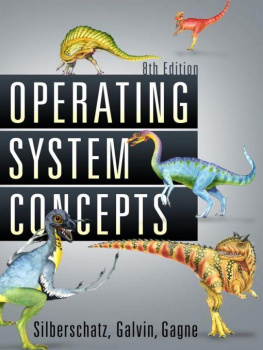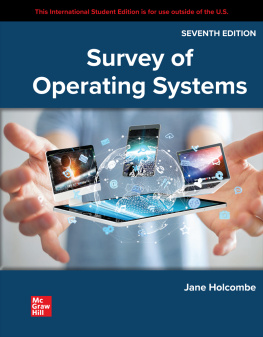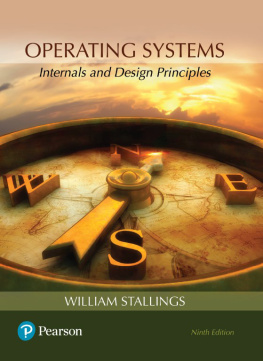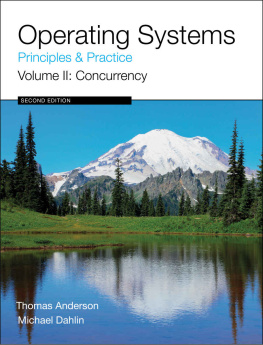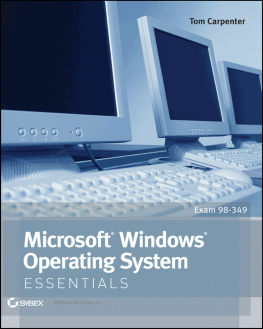Table of Contents
This book is printed on acid free paper.
Copyright 2009 John Wiley & Sons, Inc. All rights reserved.
No part of this publication may be reproduced, stored in a retrieval system or transmitted in any form or by any means, electronic, mechanical, photocopying, recording, scanning or otherwise, except as permitted under Sections 107 or 108 of the 1976 United States Copyright Act, without either the prior written permission of the Publisher, or authorization through payment of the appropriate per-copy fee to the Copyright Clearance Center, Inc. 222 Rosewood Drive, Danvers, MA 01923, (978)750-8400, fax (978)750-4470. Requests to the Publisher for permission should be addressed to the Permissions Department, John Wiley & Sons, Inc., 111 River Street, Hoboken, NJ 07030 (201)748-6011, fax (201)748-6008, E-Mail:
PERMREQ@WILEY.COM.
To order books or for customer service call 1-800-CALL WILEY (225-5945).
eISBN : 978-0-470-57744-8
To my children, Lemor, Sivan, and Aaron
and my Nicolette
Avi Silberschatz
To my wife, Carla,
and my children, Gwen, Owen, and Maddie
Peter Baer Galvin
To my wife, Pat,
and our sons, Tom and Jay
Greg Gagne
Abraham Silberschatz is the Sidney J. Weinberg Professor & Chair of Computer Science at Yale University. Prior to joining Yale, he was the Vice President of the Information Sciences Research Center at Bell Laboratories. Prior to that, he held a chaired professorship in the Department of Computer Sciences at the University of Texas at Austin.
Professor Silberschatz is an ACM Fellow and an IEEE Fellow. He received the 2002 IEEE Taylor L. Booth Education Award, the 1998 ACM Karl V. Karlstrom Outstanding Educator Award, and the 1997 ACM SIGMOD Contribution Award. In recognition of his outstanding level of innovation and technical excellence, he was awarded the Bell Laboratories Presidents Award for three different projectsthe QTM Project (1998), the DataBlitz Project (1999), and the NetInventory Project (2004).
Professor Silberschatz writings have appeared in numerous ACM and IEEE publications and other professional conferences and journals. He is a coauthor of the textbook Database System Concepts . He has also written Op-Ed articles for the New York Times, the Boston Globe, and the Hartford Courant, among others.
Peter Baer Galvin is the chief technologist for Corporate Technologies (www.cptech.com), a computer facility reseller and integrator. Before that, Mr. Galvin was the systems manager for Brown Universitys Computer Science Department. He is also Sun columnist for ;login: magazine. Mr. Galvin has written articles for Byte and other magazines, and has written columns for SunWorld and SysAdmin magazines. As a consultant and trainer, he has given talks and taught tutorials on security and system administration worldwide.
Greg Gagne is chair of the Computer Science department at Westminster College in Salt Lake City where he has been teaching since 1990. In addition to teaching operating systems, he also teaches computer networks, distributed systems, and software engineering. He also provides workshops to computer science educators and industry professionals.
Preface
Operating systems are an essential part of any computer system. Similarly, a course on operating systems is an essential part of any computer-science education. This field is undergoing rapid change, as computers are now prevalent in virtually every application, from games for children through the most sophisticated planning tools for governments and multinational firms. Yet the fundamental concepts remain fairly clear, and it is on these that we base this book.
We wrote this book as a text for an introductory course in operating systems at the junior or senior undergraduate level or at the first-year graduate level. We hope that practitioners will also find it useful. It provides a clear description of the concepts that underlie operating systems. As prerequisites, we assume that the reader is familiar with basic data structures, computer organization, and a high-level language, such as C or Java. The hardware topics required for an understanding of operating systems are included in Chapter 1. For code examples, we use predominantly C, with some Java, but the reader can still understand the algorithms without a thorough knowledge of these languages.
Concepts are presented using intuitive descriptions. Important theoretical results are covered, but formal proofs are omitted. The bibliographical notes at the end of each chapter contain pointers to research papers in which results were first presented and proved, as well as references to material for further reading. In place of proofs, figures and examples are used to suggest why we should expect the result in question to be true.
The fundamental concepts and algorithms covered in the book are often based on those used in existing commercial operating systems. Our aim is to present these concepts and algorithms in a general setting that is not tied to one particular operating system. We present a large number of examples that pertain to the most popular and the most innovative operating systems, including Sun Microsystems Solaris; Linux; Microsoft Windows Vista, Windows 2000, and Windows XP; and Apple Mac OS X. When we refer to Windows XP as an example operating system, we are implying Windows Vista, Windows XP, and Windows 2000. If a feature exists in a specific release, we state this explicitly.
Organization of This Book
The organization of this text reflects our many years of teaching courses on operating systems. Consideration was also given to the feedback provided by the reviewers of the text, as well as comments submitted by readers of earlier editions. In addition, the content of the text corresponds to the suggestions from Computing Curricula 2005 for teaching operating systems, published by the Joint Task Force of the IEEE Computing Society and the Association for Computing Machinery (ACM).
On the supporting Web site for this text, we provide several sample syllabi that suggest various approaches for using the text in both introductory and advanced courses. As a general rule, we encourage readers to progress sequentially through the chapters, as this strategy provides the most thorough study of operating systems. However, by using the sample syllabi, a reader can select a different ordering of chapters (or subsections of chapters).
On-line support for the text is provided by WileyPLUS. On this site, students can find sample exercises and programming problems, and instructors can assign and grade problems. In addition, in WileyPLUS, students can access new operating-system simulators, which are used to work through exercises and hands-on lab activities. References to the simulators and associated activities appear at the ends of several chapters in the text.
Content of This Book
The text is organized in eight major parts:
Overview . Chapters 1 and 2 explain what operating systems are, what they do, and how they are designed and constructed. These chapters discuss what the common features of an operating system are, what an operating system does for the user, and what it does for the computer-system operator. The presentation is motivational and explanatory in nature. We have avoided a discussion of how things are done internally in these chapters. Therefore, they are suitable for individual readers or for students in lower-level classes who want to learn what an operating system is without getting into the details of the internal algorithms.

